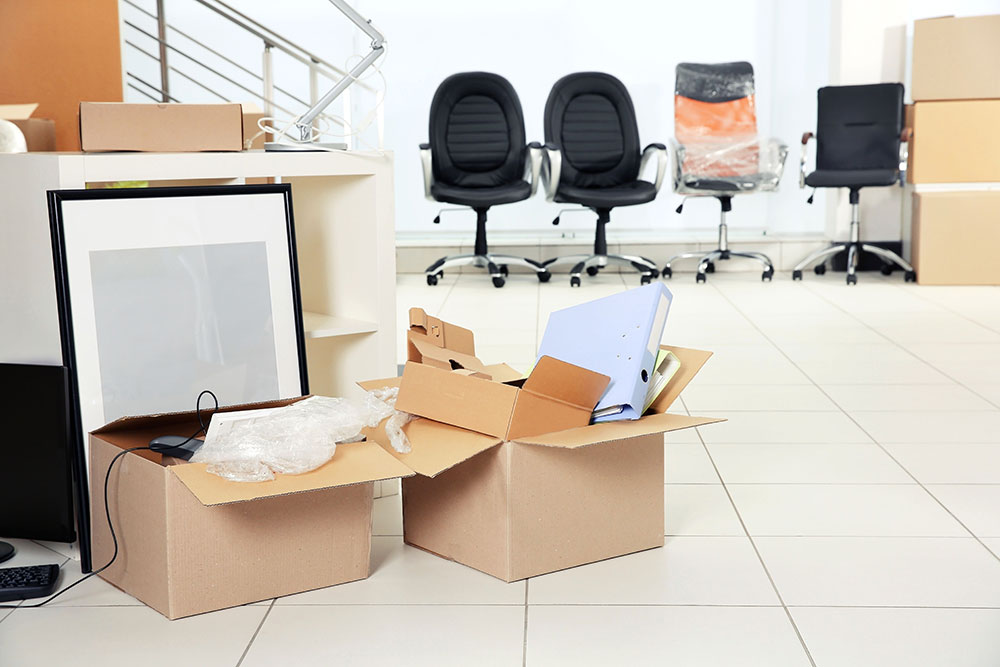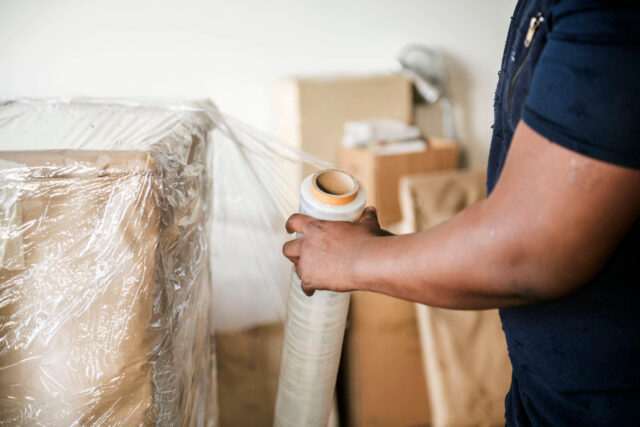
It comes the time when companies of any level and niche, be it a local ornamental fish store or an international digital design corporation, have to face a moving challenge. As exciting as it may seem initially, office moving is a complex task.
It is tiresome even to think that you must prepare and move office furniture, disconnect communication lines & equipment, protect and keep safe documentation, inform financial institutions and partners about changes in the address, and manage a seamless workflow at the same time.
To simplify the office move and hold control over all aspects, you’d better have a detailed checklist to steer a course and a reputable commercial moving company to rely on.
Comprehensive Checklist for Seamless Office Moving

To relocate the entire office smoothly you’d better make a detailed checklist ahead of time. It will guide you through the stages of the moving process and help to hold in check all the major aspects of the move. You’d better begin planning and searching for trustworthy office movers at least 6 months ahead.
Why? First of all, to have enough time to get ready and streamline the office workflow during the transition period. Secondly, commercial movers as all service providers in the transportation industry have their high and low seasons. So, to book reputable movers at a reasonable price you’d better plan ahead.
- Review the office premises lease contract. You might be obliged to make repairs or inform well in advance (2-4 months) about the move. Read thoroughly the details related to deposits and payments.
- Search for a moving company. In fact, you need to look for movers with expertise in office transition. Thus, make up a list of suitable moving services and check their licenses, track records, and reviews. Request moving quotes, compare prices, and ask for in-situ estimation gather multiple companies’ vehicle shipping quote, and ultimately decide to go with the one that offered the best balance of price and service.
- Announce the upcoming relocation. This is a serious change for all members of the team, so it would be nice to make an announcement the sooner the better.
- Assign an office move manager. You’d better delegate part of responsibilities, duties, and tasks to the assistants chosen from the staff.
- Setup the moving budget. Besides the moving costs, the budget should include additional insurance (typically, movers have only mandatory insurance with basic coverage) for valuable equipment, costly furniture items, or any antique decor items.
- Make an inventory. Study the floor plan at the new facility to figure out the best layout.
- Declutter. Rarely do offices have no junk: old unnecessary papers, broken furniture, outdated equipment, etc. You don’t want to take these items to the new premises and pay for the transportation. Hence, downsizing is a good idea.
- Prepare moving supplies. If you opt for movers with a full-range of services, you can skip this step because the company should provide all required materials, services, and equipment. But you should provide the staff with carton boxes so that they could pack personal items.
- Inform business partners, banks, customers, and service providers (phone, utilities, internet) about the address change. Update the address on the website, social media pages, and all other platforms.
- Start packing non-essentials. Naturally, every office has some papers and archives, which are not necessary for daily routine work. These can be prepared and packed earlier.
- Ask employees to prepare & pack personal items well in advance. Inform about the moving day schedule.
- Schedule a cleaning service for the current office. Arrange the cleanup for new premises too.
- Once the office has been moved, unpack and check the functionality of technologies required for running a business.
- Celebrate. Moving office is a great reason to celebrate. Prepare the party and thank all team members for assistance.
Packing and Moving Office Equipment

Moving office equipment is more challenging than it seems. You cannot run a business smoothly without thorough planning and scheduling. When it comes to relocation, most notably office moving, planning becomes critical as you need to proceed with the working process and get ready for transition. So, you might find useful the tips listed below:
- Get rid of destroyed and useless equipment. Most offices have a storage room where you can find a broken printer, a bundle of old cables, worn-out chairs, etc. Transition to the new place is the right time to declutter the office and get rid of items not wanted anymore.
- Inventory list. This is a must-do. Once you’ve got rid of destroyed things, list all available equipment, stationery supplies, etc.
- Let an IT specialist develop a plan for disconnecting equipment to allow business operations at a new place as soon as possible.
- Remember to back up all data. Cloud backup is the optimal variant.
- Pay special attention to the IT department: all devices should be unplugged and packed in boxes with additional padding. Cords must be neatly arranged and packed thoroughly to avoid tangles and mess at a new place.
Reputable office movers have special training and expertise in commercial moves; hence, they will supply and deliver all required padding materials for valuable digital equipment to keep it safe and secure. Typically, a company representative arrives at your office in order to estimate in-situ the size of the move and see what padding and wrapping are required for the office stuff. All boxes will be labeled with a list of items inside the box attached to the box.
How to Pack and Move Office Furniture?

Obviously, preparing furniture, lifting and carrying it isn’t a task for your employees as it may result in unwanted injuries. However, you still have a lot to do:
- Provide staff with boxes and ask to take personal items from cabinets and desks and pack in boxes.
- All important archives and documentation should be packed separately. You can transport them separately. This helps to empty cabinets too.
- Again, you’d better prepare an inventory of available furniture, such as cubicles, bookcases, shelves, cabinets, chairs, desks, and so on.
- Usually, moving services include disassembling and reassembling furniture, emptying cabinets, packing books and various office stationery in boxes. Yet still, you’d better discuss the details with the company representative.
Hiring office furniture movers might be the best solution: pros have the required expertise in what supplies are necessary to protect the furniture, and how to pack and carry furniture; besides, they are fully equipped to ease the truck loading process.
In conclusion
Trustworthy California office movers can relieve you from stress during such a grand step as the relocation of the office. Pros are fully equipped and trained to carry out all stages of the move, from providing moving supplies, disassembling furniture, carrying and lifting heavy items using dollies to unpacking the stuff and reassembling furniture at the new location.









